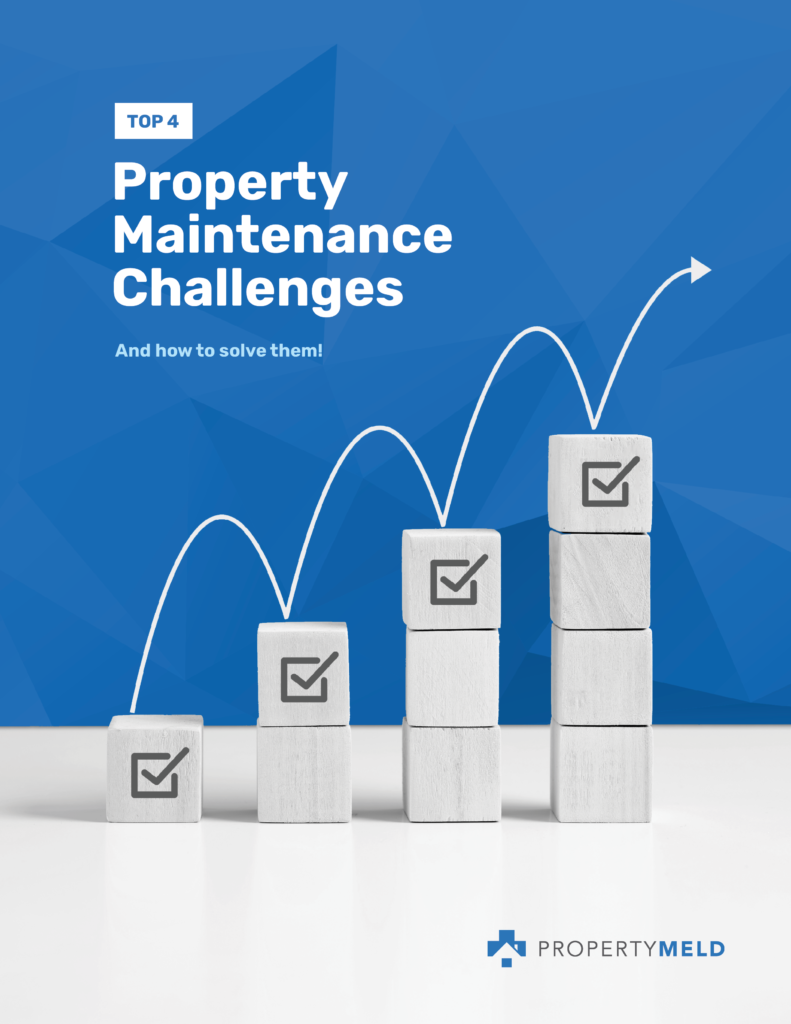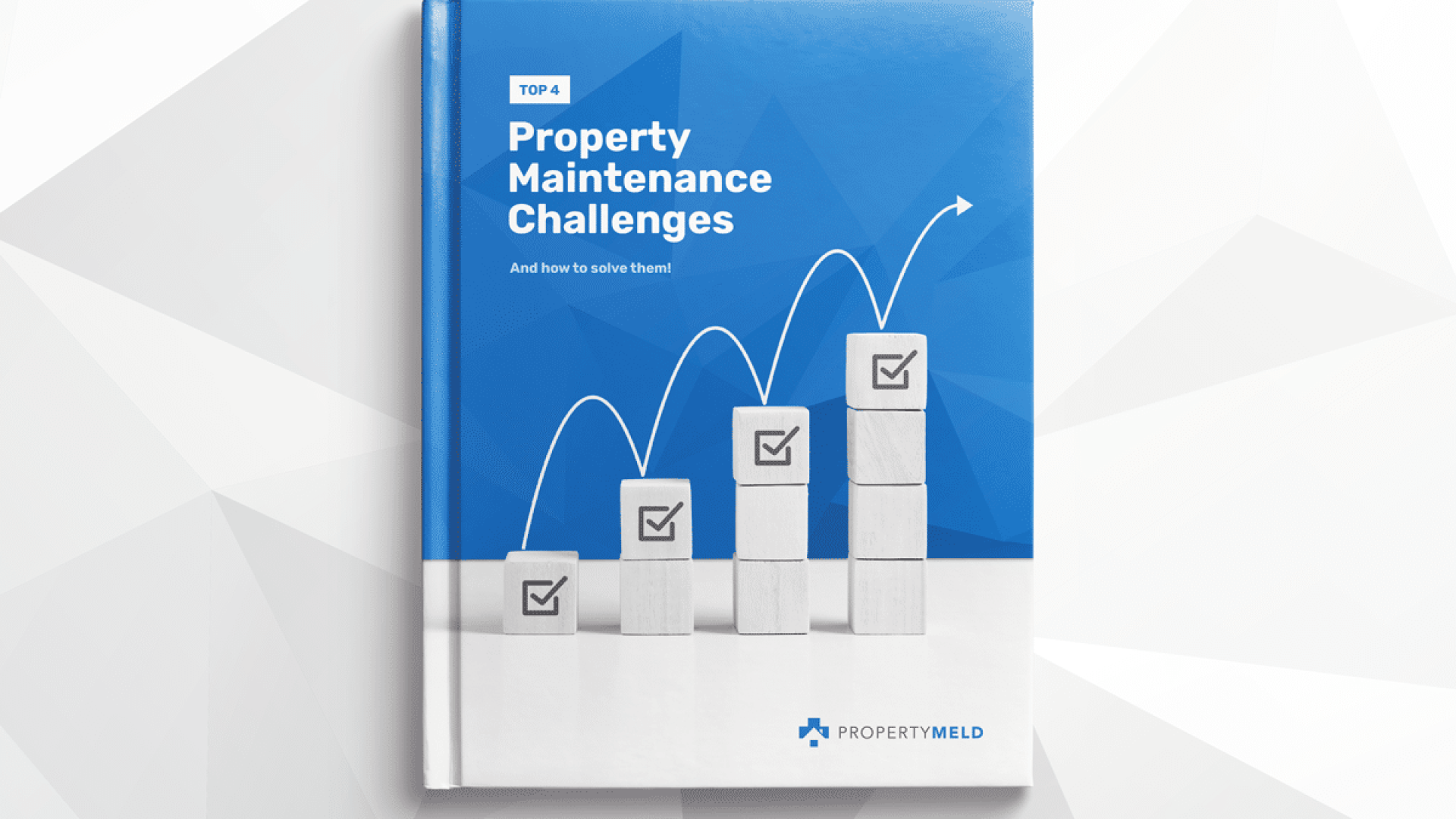At Property Meld, we engage in daily conversations with hundreds of property management companies, allowing us to identify prevalent industry trends. Foremost among these trends is the recognition that many property managers name property maintenance as their most significant headache. This can stem from a variety of factors, but we have pinpointed the four primary property maintenance challenges that most property managers encounter when dealing with maintenance. If you struggle with any of these issues, rest assured that you are not alone. Property maintenance presents difficulties due to its unpredictability and the numerous key players involved in the maintenance process.
In this blog post, we will unveil the top four property maintenance challenges you may be encountering and the negative consequences they may be causing. If you are more of a visual learner, access our complimentary ebook offering solutions to mitigate these significant pain points. Be sure to read until the end, where you can access our complimentary ebook: Top 4 Maintenance Challenges and How to Solve for Them, that offers solutions to mitigate these significant pain points.
1. Building a Strong Communication Model
The key to building a strong communication model is ensuring that residents, vendors, internal technicians, and sometimes even property owners must know where a repair is at and understand what they are responsible for. You will see things fall apart if you aren’t engaging correctly with these parties. First, if you don’t have effective communication channels, property managers or maintenance coordinators will waste hours playing phone tag trying to assign and schedule work orders. Suppose residents aren’t kept in the loop about the status of their repair. In that case, they will start to grow unhappy leading to more negative online reviews or possibly even increased resident turnover. Lastly, if you can’t reach your owners promptly to receive approvals, the repair will stall, leading to unhealthy repair speeds.
Solving communication is the baseline for creating a strong maintenance process. Developing a positive maintenance experience will be easy with a robust communication model.
2. Scheduling the Repair
Repair speed is one of the primary measures for success in a maintenance department. Because speed of repair is a leading indicator of resident satisfaction, rental turnover, and investor churn. This measures how long it takes to complete a repair, from when a resident submits a work order to when the issue has been fixed. Typically, we see leading property management companies with a speed of repair between 3-5 days, with world-class management companies achieving speeds of just two days.
To achieve these world-class speeds, you must be able to assign and schedule work orders with the correct repair person in minutes. If it takes you days to schedule a repair with a vendor or technician, you will never be able to achieve these record repair speeds. The amount of tradespeople in the industry is not increasing at the same rate as the demand. Property management companies must maximize their current team to be as efficient as possible. Taking days to schedule maintenance issues wastes hours of your day and will decrease resident satisfaction and increase backlogged work orders.
You’ll improve your bottom line when you find a way to increase your maintenance output with the same amount of resources. But, this will be nearly impossible if you aren’t tracking each repair process step and why things get held up.
3. Staffing Your Maintenance Team
Another common complaint we hear from property managers is that they don’t know how to determine how many vendors or technicians they need. One property manager we spoke to said their maintenance coordinator spends at least 60 hours each month on maintenance coordination alone. Not having enough team members can result in delayed work orders and upset residents and owners. On the other hand, having too many technicians can lead to reduced productivity and unnecessary expenses. Spending too much money on unneeded technicians will negatively affect your Net Operating Income (NOI), straining investor relationships.
In addition to long repair times and increased backlog, understaffed teams can lead to employee burnout. Burnt-out employees are more likely to lose productivity and may even leave for another job.
4. Knowing The Status of all Work Orders
As we mentioned earlier, making sure every person involved in the maintenance process knows what’s happening is crucial, but this can only be achieved with oversight and transparency in the entire process. Without direction, it’s difficult to determine the root cause of process issues. This can lead property managers to focus resources on the wrong part of the maintenance process. Determining your company’s inefficiencies in communication, scheduling, assignment, or follow-up is the only way to make strategic improvements to the maintenance strategy. Without access to data regarding your maintenance process, your repair speed will remain stagnant or even worsen, residents and owners will grow unhappy, and your maintenance costs will be unpredictable. How else will you know?
Failing to track the most important maintenance metrics leads to a reactive maintenance approach. The more reactive your strategy, the more unexpected maintenance emergencies you may deal with. And it’s no secret that unplanned maintenance emergencies typically cost much more. Property investors will not want to continue working with you if this trend is common.
Solving these property maintenance challenges is the best way to stand out among your competitors, provide a positive resident experience, reduce owner churn, and lower maintenance costs.

Download our Top 4 Maintenance Challenges and How to Solve for Them ebook to see how you can improve your process by filling out the form below.
Or if you’re ready to see how Property Meld tackles the biggest headaches surrounding property maintenance, book a demo with our team of experts.






